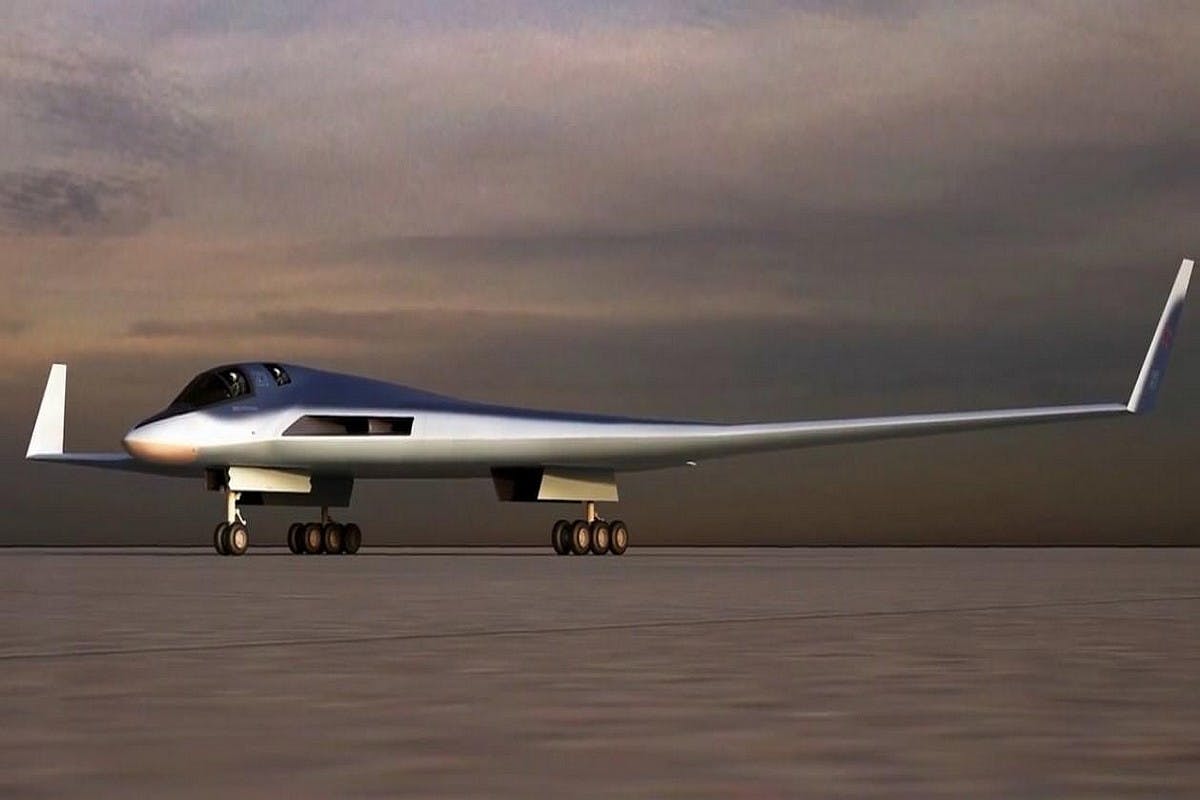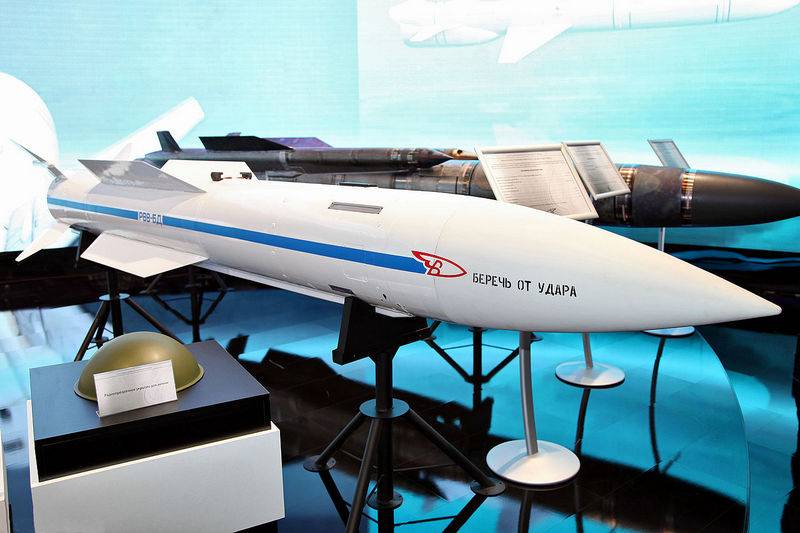Updates.
While blurred out and not officially in service, the VVS seems to have gotten its first fire and forget missile. Dubbed the LMUR (Лёгкая Многоцелевая Управляемая Ракета/Light Multipurpose Guided Missile) the name betrays a decent understanding of how far beyond anti-armor roles ATGMs have come.
По «танку» с нескольких километров: кадры первого применения ракеты для модернизированного «Ночного охотника»
Показаны кадры применения новейшей ЛМУР с борта Ми-28НМ
The PAK-DA project seems to be going strong, with the first prototype to start factory trials in 2023 and state trials in 2027. While this is rather optimistic, I strongly suspect we will see a first flight before the end of the decade. It's unclear what the intended force structure for Long Range Aviation will look like. All 16 currently serving Tu-160s are slated to be upgraded, and 10 new Tu-160s have been ordered, with plans announced for up to 50. On the other hand if the Tu-22s are also planned for retirement, they're going to need a lot more.
Контрактные сроки создания перспективного бомбардировщика ПАК ДА
The first S-350 is going into service in Leningrad region. It's still unclear whether its going to be a separate unit or linked with the S-400s at the regimental level. It will be interesting if air defense regiments go to a structure of say 1-2 S-400 btlns, 2 S-350 btlns and a separate Pantsyr battery for each bigger SAM btln.
Wall
A new air defense brigade using S-300V4s has been formed in East MD.
Новая зенитно-ракетная бригада ВВО
Contracts have been signed for the delivery of 10 Forpost-R systems over 3 years, and the first heavy Altius UAV. The Forpost-R deliveries seem likely to succeed it's a domesticated Searcher Mk2, and from the rumors, the Israelis helped with localization. The Altius is another story. The project has been beset with problems, and cost overruns. Interestingly enough a follow-on contract for 18 more Forpost-R systems is planned, and for reference currently a single Forpost "system" is 3 UAVs with control and support assets.
https://bmpd.livejournal.com/3925235.html
The first upgraded Tu-160M has flown. This is not to be confused with the new-built Tu-160M2 currently preparing for trials.
https://bmpd.livejournal.com/3925616.html
A Russian company is developing a target done to simulate swarm-style drone attacks. This is likely driven by recent experiences in Syria, as well as continued development of more and more advanced and cheap UAV tech.
https://tass.ru/armiya-i-opk/5957115
The VKS have taken delivery of two more Yak-130s. It's important to note that the type suffers from serious post-sale support problems, with nearly half of the fleet not flying. Deliveries have recently slowed down, rumors have circulated that the manufacturer has focused on producing and providing more spare parts.
https://bmpd.livejournal.com/3932200.html
The first new Be-200 for the AVMF is undergoing trials. Their exact purpose is unclear, search and rescue is being cited but they're a very large and expensive aircraft for that mission, and it would make far more financial sense to invest in a bigger fleet of Ka-32 helos then in a tiny fleet of expensive large amphibious planes. The type also has Ukrainian engines which appear to have been delivered despite the sanctions.
https://vk.com/milinfolive?w=wall-123538639_1333448
https://vk.com/milinfolive?w=wall-123538639_1333300
https://vk.com/milinfolive?w=wall-123538639_1333248
https://andrei-bt.livejournal.com/1577660.html
While blurred out and not officially in service, the VVS seems to have gotten its first fire and forget missile. Dubbed the LMUR (Лёгкая Многоцелевая Управляемая Ракета/Light Multipurpose Guided Missile) the name betrays a decent understanding of how far beyond anti-armor roles ATGMs have come.
По «танку» с нескольких километров: кадры первого применения ракеты для модернизированного «Ночного охотника»
Показаны кадры применения новейшей ЛМУР с борта Ми-28НМ
The PAK-DA project seems to be going strong, with the first prototype to start factory trials in 2023 and state trials in 2027. While this is rather optimistic, I strongly suspect we will see a first flight before the end of the decade. It's unclear what the intended force structure for Long Range Aviation will look like. All 16 currently serving Tu-160s are slated to be upgraded, and 10 new Tu-160s have been ordered, with plans announced for up to 50. On the other hand if the Tu-22s are also planned for retirement, they're going to need a lot more.
Контрактные сроки создания перспективного бомбардировщика ПАК ДА
The first S-350 is going into service in Leningrad region. It's still unclear whether its going to be a separate unit or linked with the S-400s at the regimental level. It will be interesting if air defense regiments go to a structure of say 1-2 S-400 btlns, 2 S-350 btlns and a separate Pantsyr battery for each bigger SAM btln.
Wall
A new air defense brigade using S-300V4s has been formed in East MD.
Новая зенитно-ракетная бригада ВВО
Contracts have been signed for the delivery of 10 Forpost-R systems over 3 years, and the first heavy Altius UAV. The Forpost-R deliveries seem likely to succeed it's a domesticated Searcher Mk2, and from the rumors, the Israelis helped with localization. The Altius is another story. The project has been beset with problems, and cost overruns. Interestingly enough a follow-on contract for 18 more Forpost-R systems is planned, and for reference currently a single Forpost "system" is 3 UAVs with control and support assets.
https://bmpd.livejournal.com/3925235.html
The first upgraded Tu-160M has flown. This is not to be confused with the new-built Tu-160M2 currently preparing for trials.
https://bmpd.livejournal.com/3925616.html
A Russian company is developing a target done to simulate swarm-style drone attacks. This is likely driven by recent experiences in Syria, as well as continued development of more and more advanced and cheap UAV tech.
https://tass.ru/armiya-i-opk/5957115
The VKS have taken delivery of two more Yak-130s. It's important to note that the type suffers from serious post-sale support problems, with nearly half of the fleet not flying. Deliveries have recently slowed down, rumors have circulated that the manufacturer has focused on producing and providing more spare parts.
https://bmpd.livejournal.com/3932200.html
The first new Be-200 for the AVMF is undergoing trials. Their exact purpose is unclear, search and rescue is being cited but they're a very large and expensive aircraft for that mission, and it would make far more financial sense to invest in a bigger fleet of Ka-32 helos then in a tiny fleet of expensive large amphibious planes. The type also has Ukrainian engines which appear to have been delivered despite the sanctions.
https://vk.com/milinfolive?w=wall-123538639_1333448
https://vk.com/milinfolive?w=wall-123538639_1333300
https://vk.com/milinfolive?w=wall-123538639_1333248
https://andrei-bt.livejournal.com/1577660.html








